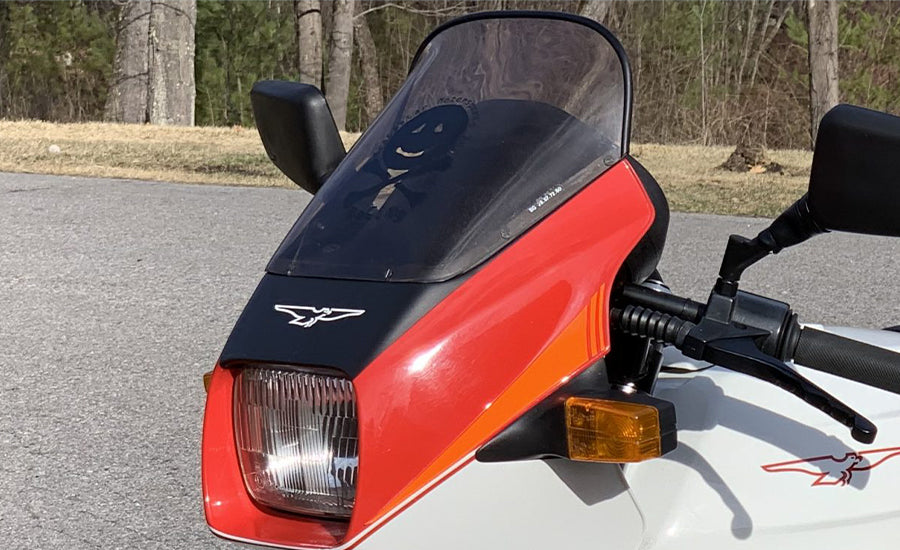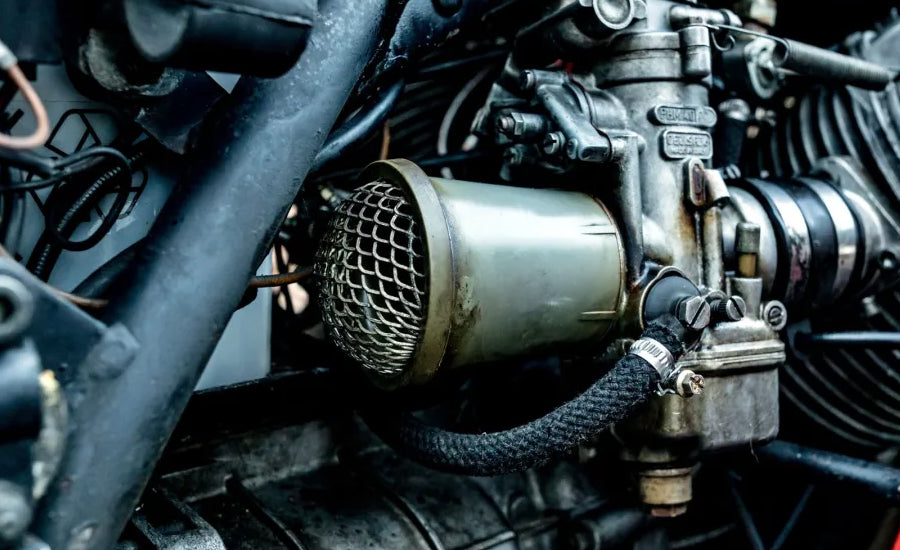Table of Content
1. Brief History of Moto Guzzi
Moto Guzzi is an Italian motorcycle company and the oldest European motorcycle manufacturer. Founded in 1921, it is currently the world’s fourth largest motorcycle manufacturer in terms of unit sales.
Between 1921 and 1966, Moto Guzzi launched many different motorcycles but had tough competition to contend with like BMW, Honda, Ducati, etc. Between 1967 and 1973, Moto Guzzi created the V7 engine for the following motorcycles: the V7 750 Special and the V7 Sport. This was a turning point for Moto Guzzi.
2. Earliest Moto Guzzi Le Mans Models
In 1975, Moto Guzzi announced the first 850 cc prototype based on the V7 engine. This motorcycle was named Moto Guzzi 850 Le Mans, the 24-hour long motorcycle race held at Le Mans in France. Over time, many changes were made to 850 Le Mans and they were released under the name 850 Le Mans Mark II and 850 Le Mans Mark III.
2.1 Moto Guzzi 850 Le Mans
The Moto Guzzi 850 Le Mans was released in 1976. It could deliver a horsepower of 71 hp and a top speed of 130 mph (209 km/h). At the time of its release, it was considered the only shaft-drive motorcycle with good handling at high speed.

2.2 Moto Guzzi 850 Le Mans Mark II
The Moto Guzzi 850 Le Mans Mark II was very similar to its previous model with only a few external changes. It had a larger full fairing with a rectangular headlight instead of a circular headlight and the cylinder bores were alloy coated.

2.3 Moto Guzzi 850 Le Mans Mark III
The Moto Guzzi 850 Le Mans Mark III was released in 1981. This vehicle had its fuel tank, seat, and fairing redesigned. The tachometer was changed and its breather box was upgraded with a condenser positioned along the upper frame rail. The Moto Guzzi 850 Le Mans Mark III’s engine was upgraded with improved intake, carburation, and a new exhaust system.

2.4 Moto Guzzi Le Mans 1000
The Moto Guzzi Le Mans 1000, or the Le Mans 1000 Mark IV, was released in 1984. This motorcycle has a 949 cc engine capable of horsepower of 81 hp. There were a total of 4,230 Le Mans Mark IVs made. With the later model known as Le Mans Mark V, it was possible to get 18-inch-sized wheels. There were a total of 2,113 Le Mans Mark Vs made.

3. Moto Guzzi Le Mans 1000 Café Racer at First Glance
In recent years, many private garages and riders have been buildingMoto Guzzi Le Mans 1000 Café Racers. The main reason why this motorcycle is chosen as a base is because of its powerful engine. Making a few adjustments and attaching modern parts to the Moto Guzzi Le Mans 1000 transforms it into one of the best café racers in the world. However, there are modifications that need to be made to convert a Moto Guzzi Le Mans 1000 into a café racer.

Transforming a standard motorcycle into a café racer is an interesting challenge for many motorcycle enthusiasts.
There are two main reasons to pick the Moto Guzzi Lemans 1000 as a base model:
- Because the Moto Guzzi Lemans 1000 is an old motorcycle, it is not too expensive.
- The Moto Guzzi Lemans 1000 has a very powerful engine compared to other motorcycles of its era.
Here is a list of items needed to convert a standard Moto Guzzi Le Mans 100 into a café racer:

3.1 Seat
Café racers tend to have flatter motorcycle seats compared to standard motorcycles. Normally, a solo seat is used for café racers, however, it is up to the preference of the rider.
The Moto Guzzi Le Mans 1000 Café Racer’s seat looks like this:


3.2 Fuel Tank
Café racers have a fuel tank with a flat upper surface rather than the curved tank on standard motorcycles. The Moto Guzzi Le Mans 1000’s fuel tank can be fitted on almost any kind of café racer. However, the paint job will depend on the rider’s preferences. To help reduce vibrations from the fuel tank, rubber mounts can also be fitted.

3.3 Fairing
Café racers have curved fairings while fairings on standard motorcycles tend to be more streamlined. However, fairings are an optional add-on on a café racer.
The Moto Guzzi Le Mans 1000’s stock fairing looks like this:

The Moto Guzzi Le Mans 1000 Café Racer fairing looks like this:

3.4 Exhaust
Café racers have custom exhausts rather than the standard slim exhausts pointed in an upright position. A café racer’s exhaust tends to produce more rumbling sounds than stock exhausts.

3.5 Fender
Café racers either have a smaller fender or no fender at all depending on the rider’s preferences.

3.6 Handlebars
Café racers tend to have lower handlebars, while standard motorcycles tend to have handlebars at a normal height. With lower handlebars, the cables/wiring connected to the café racer’s handlebars also needs to be adjusted.
3.7 Tires
Café racers tend to have wide, high-profile tires that are not found on standard motorcycles. In a standard motorcycle, the tire is not very wide and it is not a high-profile tire. Normally cafe racer motorcycle tires are sleek, broad, and have the normal size groove. The reason for using broad tires is that they provide more road grip than the normal tires of standard motorcycles.
The tires of a standard motorcycle are slim, most of them have immersive patterns on them so that can be driven on plain roads and some slightly rough surfaces as well.
Café Racer tires:

Standard motorcycle tires:

3.8 Carburetor and Filter
Café racers have quick and responsive throttle controls due in part to the air filter. On a standard motorcycle, the air filter is hidden beneath the side panels, while for a café racer, the air filter is open and present on one side of the carburetor. This usually requires the rider to change the carburetor’s position or remove the side panels entirely.
The carburetor is not hidden by the side panels.

4. Conclusion
CAFÉ RACERS tend to weigh less and travel faster than most standard motorcycles. However, to ensure better safety on longer rides, it is recommended that riders acquire additional motorcycle accessories like SADDLEBAGS, SISSY BAR BAGS, SISSY BAR, CRASH BARS, LUGGAGE RACKS, TRUNK, HANDLEBARS BAGS, SEATS, etc. that can be easily bought from ONLINE STORES.













Leave a comment
All comments are moderated before being published.
This site is protected by hCaptcha and the hCaptcha Privacy Policy and Terms of Service apply.